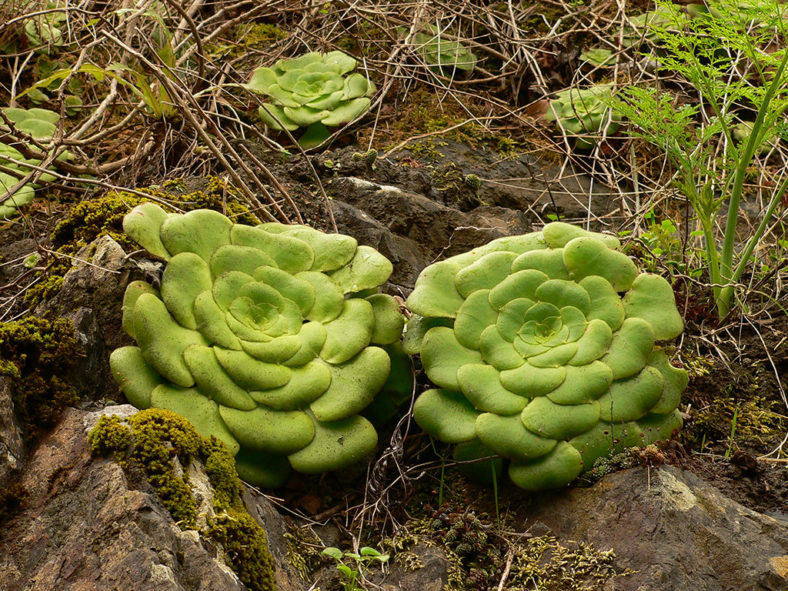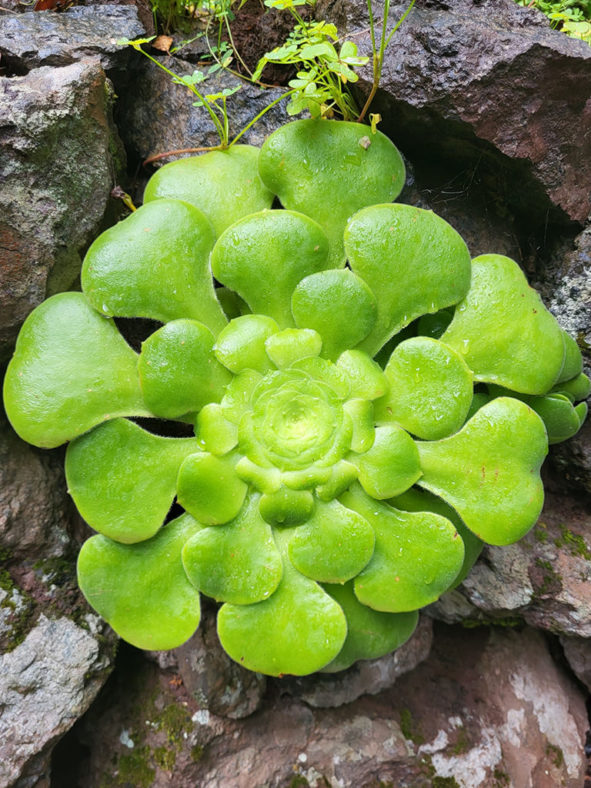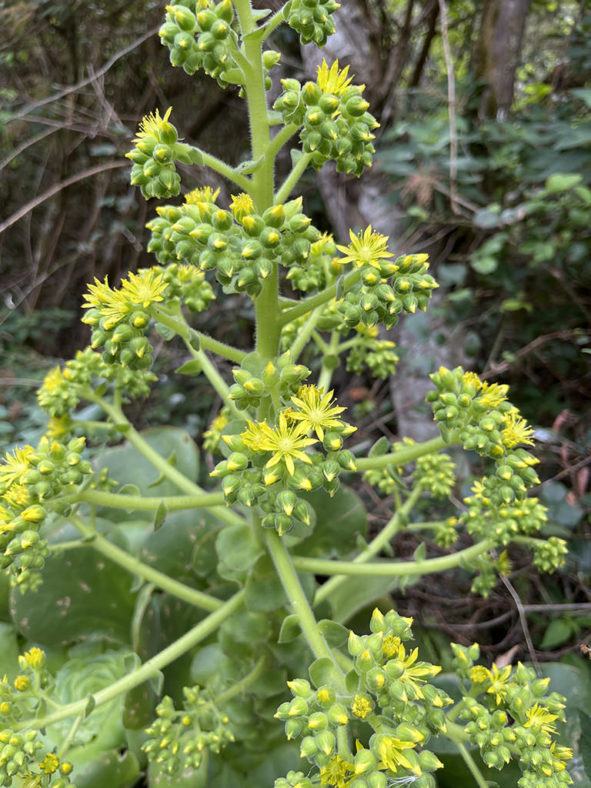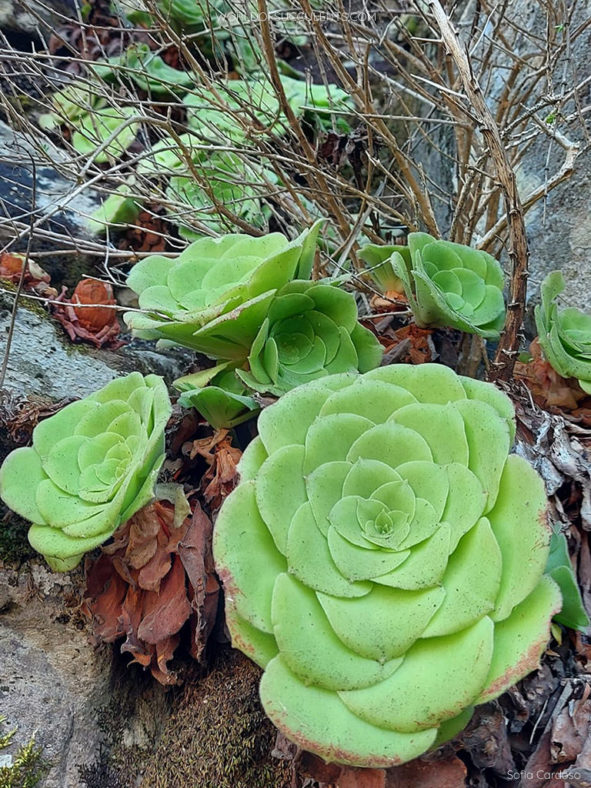Scientific Name
Aeonium canariense subsp. latifolium (Burchard) Bañares
Synonym(s)
Aeonium canariense var. subplanum, Aeonium subplanum, Sempervivum canariense subsp. latifolium
Scientific Classification
Family: Crassulaceae
Subfamily: Sempervivoideae
Tribe: Aeonieae
Genus: Aeonium
Etymology
The subspecific epithet "latifolium (lat-ee-FOH-lee-um)" means "broad-leaved" and refers to the broad apex of the leaves.
Origin
Aeonium canariense subsp. latifolium is native to the Canary Islands (La Gomera). It is abundant within the forest and on humid walls located on the northern slopes of the island and sporadically in cool southern hillsides, ranging from almost sea level to 3,280 feet (1,000 m).
Description
Aeonium canariense subsp. latifolium, formerly known as Aeonium canariense var. subplanum, is a succulent plant that forms a large, flattish, usually solitary rosette of velvety, green, overlapping leaves. The rosette can grow up to 24 inches (60 cm) in diameter. The fleshy leaves are spoon-shaped with an oval apex and covered with tiny glandular hairs.
The yellow, star-shaped, 10 to 12-merous flowers appear in a large conical inflorescence in spring. The inflorescence can reach up to 12 inches (30 cm) in height and 11.2 inches (28 cm) in diameter, while the flowers can reach a diameter of about 0.8 inches (2 cm). The rosette dies after blooming.

How to Grow and Care for Aeonium canariense subsp. latifolium
Light: A. canariense subsp. latifolium grows best in full sun to partial shade. Indoors, give it bright indirect light as much as possible. A leggy, stretched plant is a sign of not getting enough light.
Soil: While most succulents do well when planted in a potting mix specifically formulated for succulents, sandy loam or regular potting mix amended with perlite is better for A. canariense subsp. latifolium because it requires some more moisture.
Temperature: This succulent does not like hot or dry weather and may go dormant in summer. It prefers temperatures between 65 and 75 °F (18 and 24 °C). A. canariense subsp. latifolium can withstand temperatures as low as 30 °F (-1.1 °C). USDA Plant Hardiness Zones 10a to 11b, 30 to 50 °F (-1.1 to 10 °C).
Watering: A. canariense subsp. latifolium requires more water than most succulents, but too much moisture can cause root rot. Water the plant thoroughly in spring and fall, then allow the soil to dry out before watering again. Water more sparingly in winter. The plant does not need to be watered during its summer dormancy except in arid conditions.
Fertilizing: Feed your plant during the growing season with a half-strength balanced fertilizer once a month. Do not feed A. canariense subsp. latifolium when it is dormant in the summer months.
Repotting: If you grow A. canariense subsp. latifolium in a container, repot it with fresh potting soil every two to three years. Choose a container with drainage holes to avoid standing water and root rot.
Propagation: Since it rarely produces offsets, A. canariense subsp. latifolium is usually propagated by seed. Sow the seeds in spring.
Learn more at How to Grow and Care for Aeonium.
Toxicity of Aeonium canariense subsp. latifolium
A. canariense subsp. latifolium is non-toxic to humans and animals.
Links
- Back to genus Aeonium
- Succupedia: Browse succulents by Scientific Name, Common Name, Genus, Family, USDA Hardiness Zone, Origin, or cacti by Genus
Photo Gallery
Click on a photo to see a larger version.


